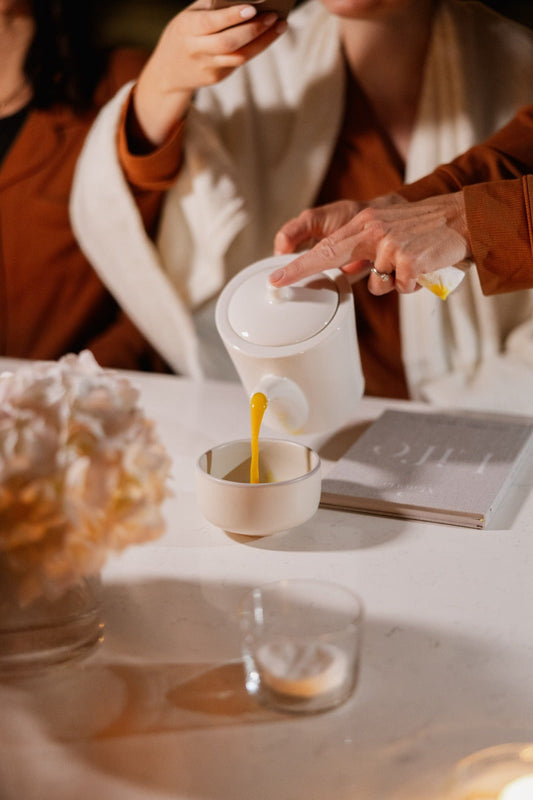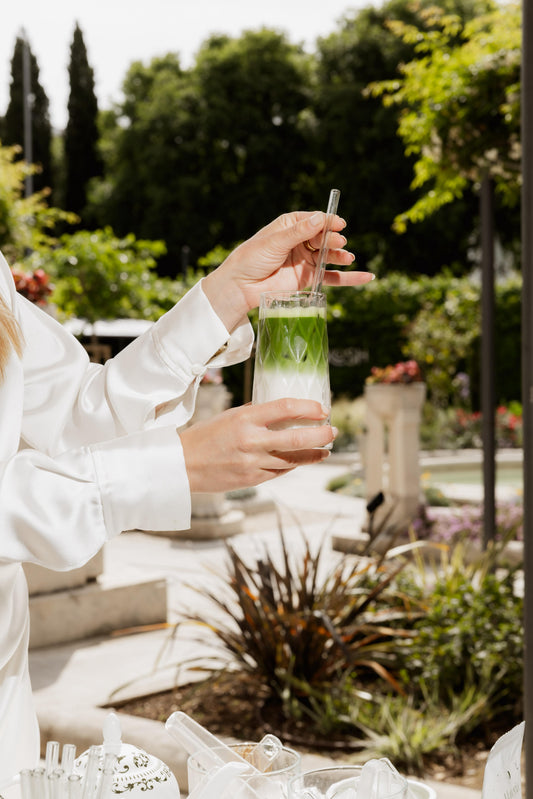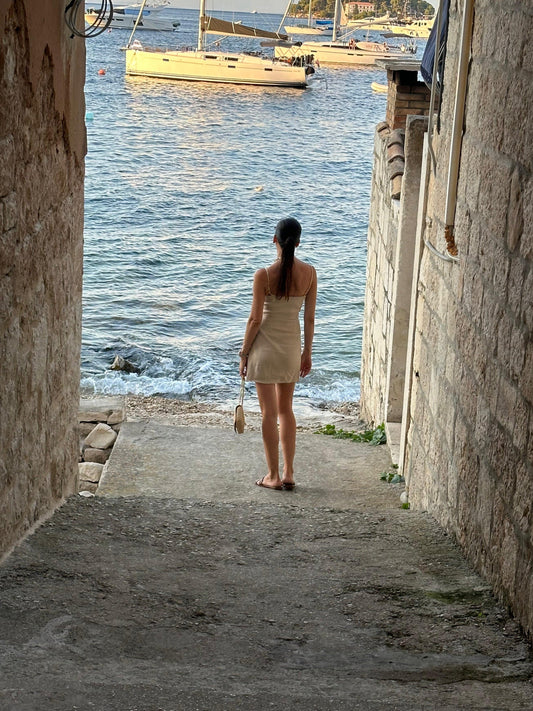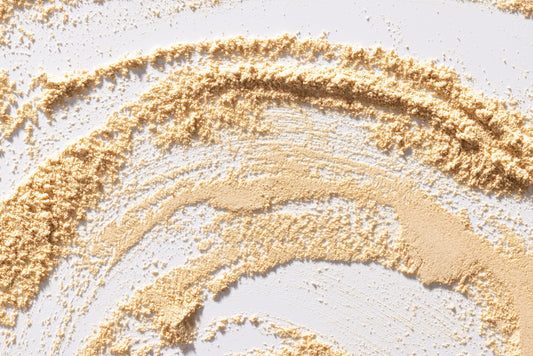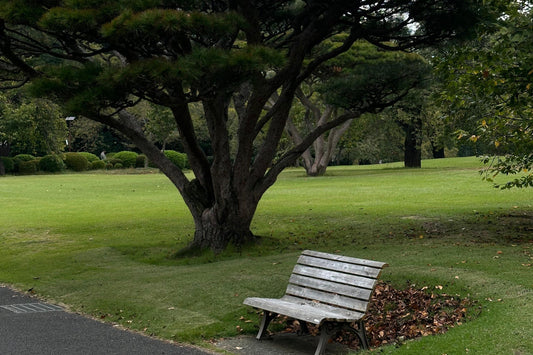The Big Longevity Guide: Are We Ready to Live to 100?
Why it’s so hard to rest today
Health, rest and peace are words we repeat every day - yet we have forgotten HOW. There’s too much distraction and too little presence.
Hence the need for a concept that carries a promise within it: longevity. Not as a miracle pill, not as a magic formula that extends life by decades, but as a way of thinking that returns us to the basics: how we live today determines how we will live tomorrow. Longevity is not just about the number of years - it’s about the quality of those years. And the quality of life depends on the rhythms we create ourselves.
If you’ve ever searched for anything about your health, the algorithm has probably already served you the word longevity, a concept that has become a mainstream obsession.
A longer life: a goal available to everyone
Physician Peter Attia in his book Outlive: The Science and Art of Longevity argues that longevity makes sense only if we simultaneously care for functional health - strength, mobility, cardiovascular endurance, balance, and cognitive agility. We are not trying to “chase” youth, but to slow down the processes that wear us down and build a body and mind capable of carrying us through a long life. That is why this topic is not a competition for who will live the longest, but a question of how not to fall apart along the way.
Longevity speaks of the cracks in our time, of what exhausts us quietly: chronic inflammation, lack of sleep, constant stress and poor nutrition. It also speaks of balance and the small, tangible practices we can start today. It is not an elite philosophy, not a routine that requires expensive treatments, but pragmatic care for the human who lives in us and next to us.
On Materia we often write about gentle hygiene of everyday life - silence, presence, rituals, micro-pauses, connection with nature. In a fast and over-productive world we seek peace more than we find it. That’s why this guide is an invitation to build habits that will last longer than the holiday itself. For there is no universal recipe for longevity, but there are universal principles that help our bodies function better, our minds calm down, and our days gain structure that supports us - rather than draining us.

Japan as inspiration: where people live longest - and healthiest
In the global conversation about longevity, Japan is the most often cited example - the country with some of the longest life expectancies in the world. The “blue zones”, Okinawa in particular, show us a blueprint that’s both simple and profound: purpose (ikigai), movement integrated into daily life, social connection, light and balanced food, and deep respect for nature. We’ve already written about these principles and specific practices that support them in our article 5 Secrets of Japanese Longevity & Ageless Vitality.
100 years of life: are we ready?
Laura Carstensen, professor of psychology and founder of the Stanford Center on Longevity, gathered scientists, physicians, economists and social policy experts around a simple question with a complex echo: What does a 100‑year life look like - and how do we prepare for it? They offered a model they call the 100‑Year Life, emphasizing that living to 100 will soon be the rule rather than the exception - and that we must prepare for it physically, emotionally, financially, medically, culturally, because the consequences are far‑reaching.
Especially when we consider earlier findings: people are afraid of aging not because of wrinkles, but because of losing independence; what scares them most is the loss of cognitive function and an empty savings account.
From the initial discussion came a multi‑year study whose mission is clear: to redefine the concept of a healthy lifespan. Not only medically, but also through less measurable - yet equally important - dimensions: meaning, connection, learning, contribution. Because what do a hundred years of life mean if we don’t know how to live them?
In this guide we bring 6 longevity habits we could (and should) bring home from vacation. They are gentle, tangible, and have strong scientific backing that shows how they affect metabolism, hormones, the immune system and everyday life.
1. Grounding: connection with the earth as a natural reset

For a long time, barefoot walking was viewed as a poetic symbol of freedom: a scene from childhood or a romantic film. Today we know it’s much more than a symbol. Direct contact of the body with the ground (grass, earth, sand) has a measurable effect on our nervous system: it calms inflammation, stabilizes cortisol, improves sleep and mood, and helps the body regulate biorhythms more naturally. Touching the ground with bare feet, hands or body reduces the cumulative effect of stress on the organism and returns us to the biological logic for which we are designed.
Forest bathing is measured by reduced cortisol levels, and exposure to natural light regulates melatonin and improves the architecture of sleep. This is not a wellness trick, but a return to the body’s biology.
On vacation grounding becomes almost spontaneous: coffee on a terrace without a laptop, walking on a beach without shoes, sunrise without a soundtrack. The question is: how do we bring it into everyday life, into a concrete city routine?
How to take it home
Morning practice: set aside 10–20 minutes to be outdoors - balcony, yard, park. Stand or sit with your feet on the ground, breathe, look at the sky. The point is not a spectacular ritual, but continuity.
Green meetings: once or twice a week plan a walk in the woods or by the water as a real appointment. That’s when nature stops being a backdrop and becomes the main event.
Minimalism for feet: if the ground isn’t safe, choose minimalist footwear for part of the day. The pace slows, foot muscles work, and you still feel the surface under you.
In winter: grounding is also conscious switching off. If there’s no lawn or sand, there are forest walks and moments of silence without screens.
2. Anti‑inflammatory rhythm: one plate - many protections

Longevity is always connected to lower levels of chronic inflammation - the silent process that slowly “eats away” at our health. It’s not the occasional cold or injury that worries us, but low‑grade, constant inflammation fueled by stress, lack of sleep, highly processed foods and a sedentary lifestyle.
The anti‑inflammatory rhythm is not a rigid diet, but a way of composing a plate based on simple, whole ingredients: colorful vegetables and fruit, quality protein, healthy fats, whole grains, fermented foods, herbs and spices. It’s also an eating schedule that respects the body’s clock: the last big meal earlier in the evening, a long overnight break for digestion and cell renewal.
When we talk about inflammation we also talk about pleasure - nourishing, tasty, varied food that brings color and structure to the day. This is where spices and adaptogens help, gentle plant allies that support the body in stress, hormone balance and energy. We wrote about them in detail in Adaptogens: Ancient Medicine for Modern Times, where we also introduce maca as a natural support that our community has embraced.
How to take it home
Build your plate: half colorful vegetables, a quarter protein (fish, legumes, eggs, tofu), a quarter whole grains or root vegetables, plus healthy fats (olive oil, nuts, seeds).
Fermented allies: kefir, yogurt, kimchi, sauerkraut or miso several times a week.
Spices as medicine: turmeric is a natural anti‑inflammatory that fits easily into everyday meals - soups, oven‑bakes, lattes. Try Organic Turmeric Powder 100 g.
Maca for balance: Organic Maca Powder 100 g supports energy and hormonal balance, especially when the body transitions from a summer to an autumn rhythm.
Matcha instead of the second coffee: matcha provides calm focus and antioxidant protection - start with this perfect matcha latte recipe.
Small weekly ritual: a colorful market haul on weekends and two pre‑prepped dishes (a tray of roasted vegetables and a pot of grains) make the anti‑inflammatory rhythm easy.
Try a matcha morning ritual instead of a second coffee.
Add maca to a smoothie or yogurt during periods of increased stress and fatigue.
Cook seasonal and colorful: the more colors on the plate, the more cellular protection.
3. Conscious rest: the power of the pause

The body has its own logic and it’s relentless: recovery happens in rest, never in activity. The guilt we feel the moment we slow down has, unfortunately, become the norm.
On vacation things look different. There we allow ourselves to sleep longer, stare at the sea without a goal, breathe more deeply. We return home energized - not because of adrenaline spikes, but because we actually rested.
But as soon as we return home, we re‑adapt to the matrix of exhaustion. Rest is again not a basic human need, but a luxury we can’t afford.
Science is clear: without sleep there is no health and no longevity. Chronic sleep deprivation raises inflammation, disrupts hormones (insulin, leptin, ghrelin), impairs cognition, and increases the risk of depression, anxiety, dementia and cardiovascular problems. On the other hand, regular sleep of seven to eight hours is one of the simplest and cheapest “longevity interventions” that exist.
Rest also includes micro‑pauses during the day - moments when the nervous system resets, when we unplug from the constant stream of information and allow the body to breathe.
How to take it home
Sleep rhythm: seven to eight hours, at approximately the same times. The bedroom should be dark, quiet and cool, and the evening screen‑free at least one hour before bed.
Micro‑pauses: five minutes every two hours: a walk around the office, conscious breathing, looking into the distance. Pauses don’t have to be productive; that’s exactly their value.
Breathing and meditation: techniques like 4‑7‑8 breathing or a short ten‑minute evening meditation lower the nervous system load, drop cortisol, relax muscles - and make sleep easier.
Evening wind‑down ritual: instead of ending the workday with messages and scrolling, finish with a warm shower, soft light and a quiet journal entry - here’s how to start journaling.
4. Rituals: small anchors in the day

Rituals are not grand gestures; they are small anchors that structure time: opening and closing the day, transitions between roles, soothing signals for the nervous system. A morning cup of matcha in silence, a short walk after lunch, stretching on a mat in the evening. Rituals return us to predictability, and predictability is a form of safety.
Rituals also restore agency - the feeling that we influence our day. When the day has structure, we’re less scattered, less drawn into randomness, less likely to “lose” ourselves in the needs of others.
How to take it home
Morning opener: water + light + movement. A glass of water, a few minutes of daylight, and short mobility on a mat.
Movement cue: place the Yoga Mat somewhere visible and unfurl it several times a day for 3–5 minutes: spinal twists, hip openers, neck and shoulder releases.
Journal as a bridge: three sentences in the morning, three in the evening. Not a novel, just a snapshot of presence - a small bridge between the inner and outer world.
Evening signal: a turmeric latte or herbal tea becomes a signal for sleep. A closing ritual is as important as the one that opens the day.
5. Forever students: a brain in motion

If the body is made for movement, the brain is made for learning. Continuous learning and curiosity are among the strongest predictors of a long and happy life.
The brain loves stimuli. It changes and grows as long as we use it. Just as small daily exercises strengthen muscles, small mental habits keep cognitive freshness.
How to take it home
Read every day, at least a few pages, whether it’s fiction or a scientific article.
Learn new skills: a language, an instrument, meditation, cooking dishes from another culture.
Use your journal for growth too: not only introspective thoughts, but notes on what you learned that day.
Be curious: ask questions, dig deeper, don’t take the world for granted.
Longevity is not only the extension of years, but the extension of curiosity, contribution and love. Without meaning, life becomes a series of tasks; with meaning, it becomes a path. And meaning is, ultimately, the greatest elixir of longevity.
6. Beginner as superpower

Being a beginner is often experienced as uncomfortable: insecurity, slowness, a sense of inadequacy. But for the brain, beginnings are rocket fuel. Every time we enter the unknown, the brain adapts, grows and creates new neural connections.
Crosswords and sudoku can be useful, but the brain thrives on novelty - on situations where it has to reorganize, not just repeat. To build cognitive reserve, it needs more than routine. It needs the unknown.
That’s why Laura Carstensen recommends challenges that push us out of comfort: a new instrument, a language, a different way of moving, traveling to unfamiliar places, cooking from another culture. The brain experiences all of this as “weights” that build cognitive mass.
How to take it home
Sign up for a course in something you’ve never tried - from pottery to guitar.
Learn a language that intrigues you, even if it’s just one word a day.
Change your routine: choose a new route to work, read a genre you usually avoid.
Step into a new environment: travel or at least immerse yourself in local culture in a way that puts you in the learner’s role.
And finally we have to ask: Can we make it to a hundred? We don’t know. But we can certainly build a life that will carry us as far as possible - a life with rhythm, rest, learning and connection. For longevity is not the exclusive right of a chosen few, but a gentle discipline available to everyone. The length of life is not measured by the calendar, but by the depth of presence.





